
Is there a better platform to showcase your products and connect with customers than Facebook? With its powerful e-shopping feature called Facebook Shops, you can create a seamless shopping experience for your audience, boost your online sales and take your business to new heights. In this blog post, we'll dive into the Facebook Shop benefits, features and how you can create it. Whether you're a seasoned e-commerce entrepreneur or just starting your online venture, get ready to discover the incredible opportunities that await you on Facebook Shop!
What is a Facebook Shop?
Facebook Shop is a social commerce feature provided by Meta. It serves as a digital storefront where businesses can showcase and sell their products directly on Facebook.
They can create a visually appealing and organized display of their products, complete with product descriptions, pricing and images. Once in the shop, customers can browse their products, find what they want and make purchases easily.
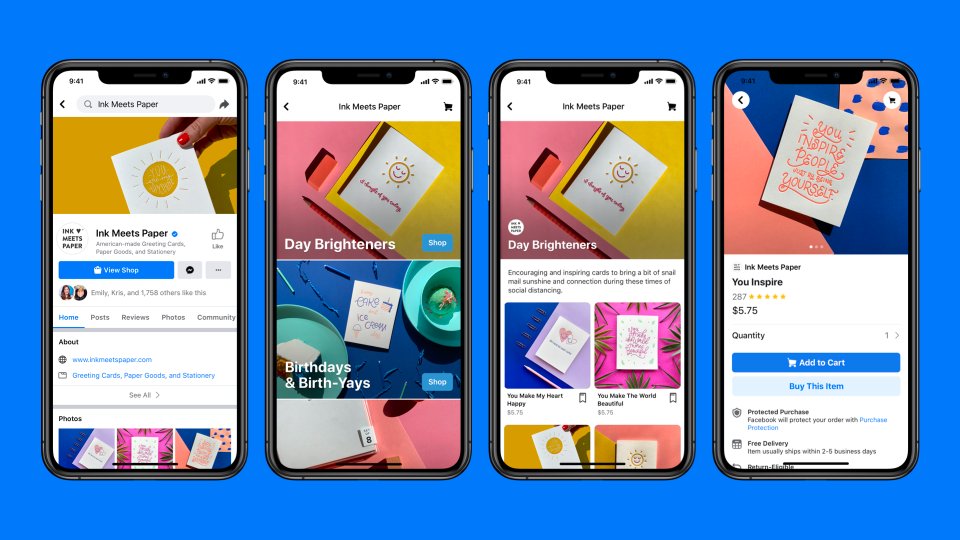
Facebook Shop also provides various features to enhance the shopping experience. For example, product tagging in photos and videos posted on your Facebook Page, search functionality for easy product discovery and customer reviews.
Lastly, products, collections and promotions can be added, removed and arranged according to your needs. If you’ve never come across a Facebook Shop, we’ll explain where you can find them next.
Where to Find Facebook Shops
Customers can find Facebook Shops on a business’s Facebook Page, Instagram profile, Instagram ads with product tags, or shoppable content in their Feed, Stories and Reels. Once in a Facebook Shop, they can easily explore different product categories, view product details, add items to their cart and proceed with the checkout process.
On top of Facebook Shops, Meta has also launched Instagram Shops, which can be discovered on Instagram Explore. Both Instagram and Facebook Shops are managed under Meta Commerce Manager. So if you have Shops on both Facebook and Instagram, your products can be visible on both platforms.

While in the past it was possible to display Meta Shops (Facebook and Instagram) on the WhatsApp Business App, the default WhatsApp social commerce tool is now WhatsApp Catalogue, a mobile storefront that you can manage in the WhatsApp Business App.
Now, you might be wondering how customers can complete a purchase in Facebook Shops. You’ll find the answer in the following section.
Facebook Shop: Checkout Methods
When it comes to checkout methods for your Facebook Shop, you’ll encounter three possible options: Website checkout, Messenger checkout and in-app checkout.
With website checkout, customers are redirected to the business's external website to complete the purchase. When a customer selects a product and proceeds to checkout, they are taken to the business's website to finalize the transaction.
Meta Pay allows customers to transfer money directly within the Messenger app in the US and Thailand. Customers can initiate the purchase process, select products and complete the transaction seamlessly within the Messenger conversation.
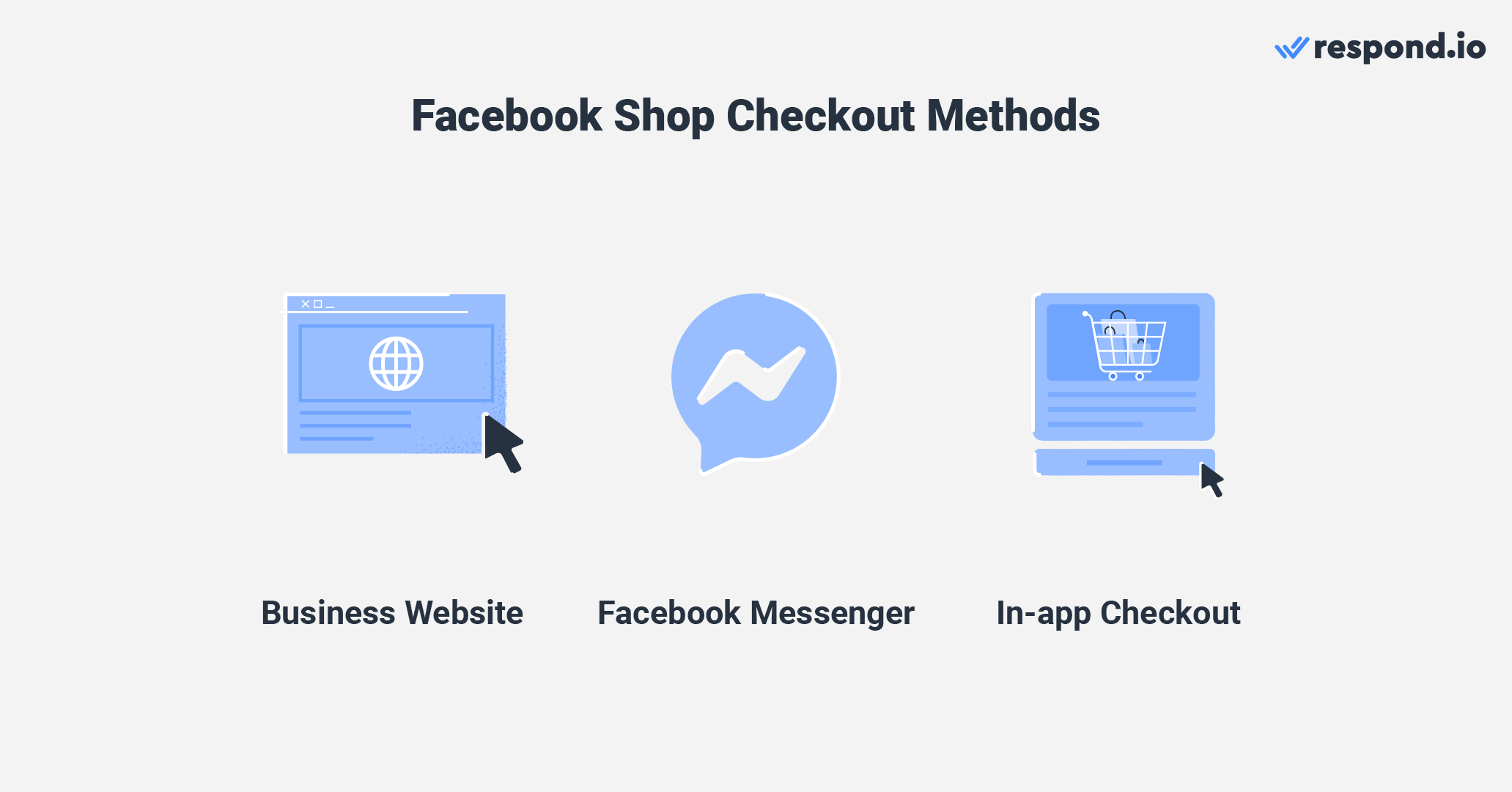
Finally, businesses in the US have access to the in-app checkout feature, which enables customers to complete their purchases without leaving the Facebook app. The entire transaction, including payment, can be conducted within the Facebook Shop interface, providing a seamless and convenient shopping experience.
Is Facebook Shop free? While creating one doesn’t cost money, you’ll incur certain fees, which we’ll explain next.
Facebook Shop: Costs Involved
Businesses will be charged a processing fee for every order. The exact amount of the fee will vary depending on how the business onboarded to Facebook Shops and the transaction type.
If you have onboarded to Shops via the Facebook and Instagram app on Shopify, Shopify will directly charge you the processing fee for any orders made through Meta. This applies to Shopify merchants who use Shopify Payments for their online store.
The amount charged by Shopify will be the same as what you are charged for orders made on your online shop. However, using Shop Pay for third-party gateways via Shopify will not impact your website's processor or web order fees.
Transaction Type | Sellers that onboard to Shops via the Facebook and Instagram app on Shopify | Sellers that onboard to Shops via Commerce Manager (expressed as % of total transaction value) |
|---|---|---|
Card | A payment processing fee will be charged by Shopify directly. | 2.9% |
PayPal branded checkout | A payment processing fee will be charged by Shopify directly. | 3.49% |
Shop Pay | A payment processing fee will be charged by Shopify directly. | 2.9% |
Things work differently for businesses that onboard to Shops via Commerce Manager. When you make a sale, a processing fee is automatically deducted from your payout. This amount varies based on the transaction type, as seen in the image.
This processing fee covers Meta's service costs, and you’ll keep the rest of your earnings. Now that you know how Facebook Shops work, we’ll discuss the benefits of using a Facebook Shop.
Why Set Up a Shop on Facebook
There are a few reasons why both businesses and customers benefit from using Facebook Shops.
Facebook is a widely used social media platform with billions of active users. By setting up a Facebook Shop, businesses can reach a large audience, enhance their online presence and increase brand visibility.
With the majority of Facebook users accessing the platform through mobile devices, having a Facebook Shop ensures that your products or services are easily accessible to mobile users. It allows for a smooth shopping experience within the Facebook app, increasing convenience for potential customers.
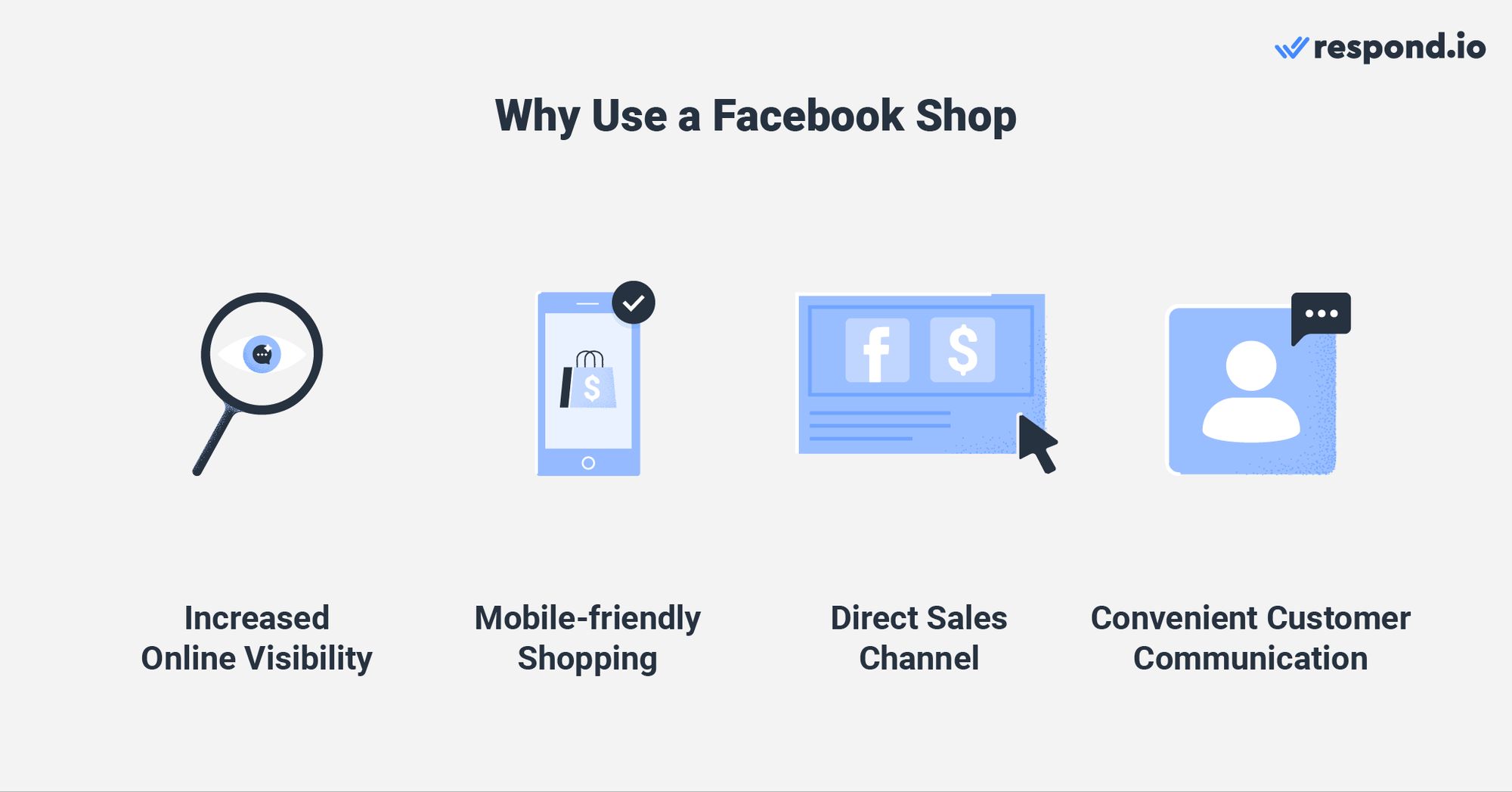
Facebook Shop allows businesses to sell products directly through the platform. Customers can browse, select and purchase items without leaving Facebook, simplifying the buying process and potentially boosting conversions.
This messaging functionality is integrated into the shopping experience, allowing customers to seek assistance, ask questions or clarify product details before purchasing.
Because of the mentioned benefits, many businesses do not hesitate to use Facebook Shops to sell online. If you’re looking for inspiration, we’ll run you through some real-life examples.
Turn customer conversations into business growth with respond.io. ✨
Manage calls, chats and emails in one place!
Businesses Using Facebook Shops with Great Results
In this section, we’ll introduce you to Zimba and Pink Tag Boutique, two companies that have seen success using Facebook Shop to boost sales.
How Zimba Boosts Sales with Facebook Shop
Zimba, a teeth-whitening brand, eagerly embraced Facebook Shops to expand its distribution channels and connect with customers on Facebook and Instagram. With an existing presence on these platforms and a Facebook catalog, setting up the Shop was straightforward for Zimba.
Customers can easily discover Zimba's Shop through various channels such as their Facebook Page, Instagram profile, Stories, and ads. The shopping experience was seamless, allowing users to browse, add products to their cart and complete orders within the app itself.
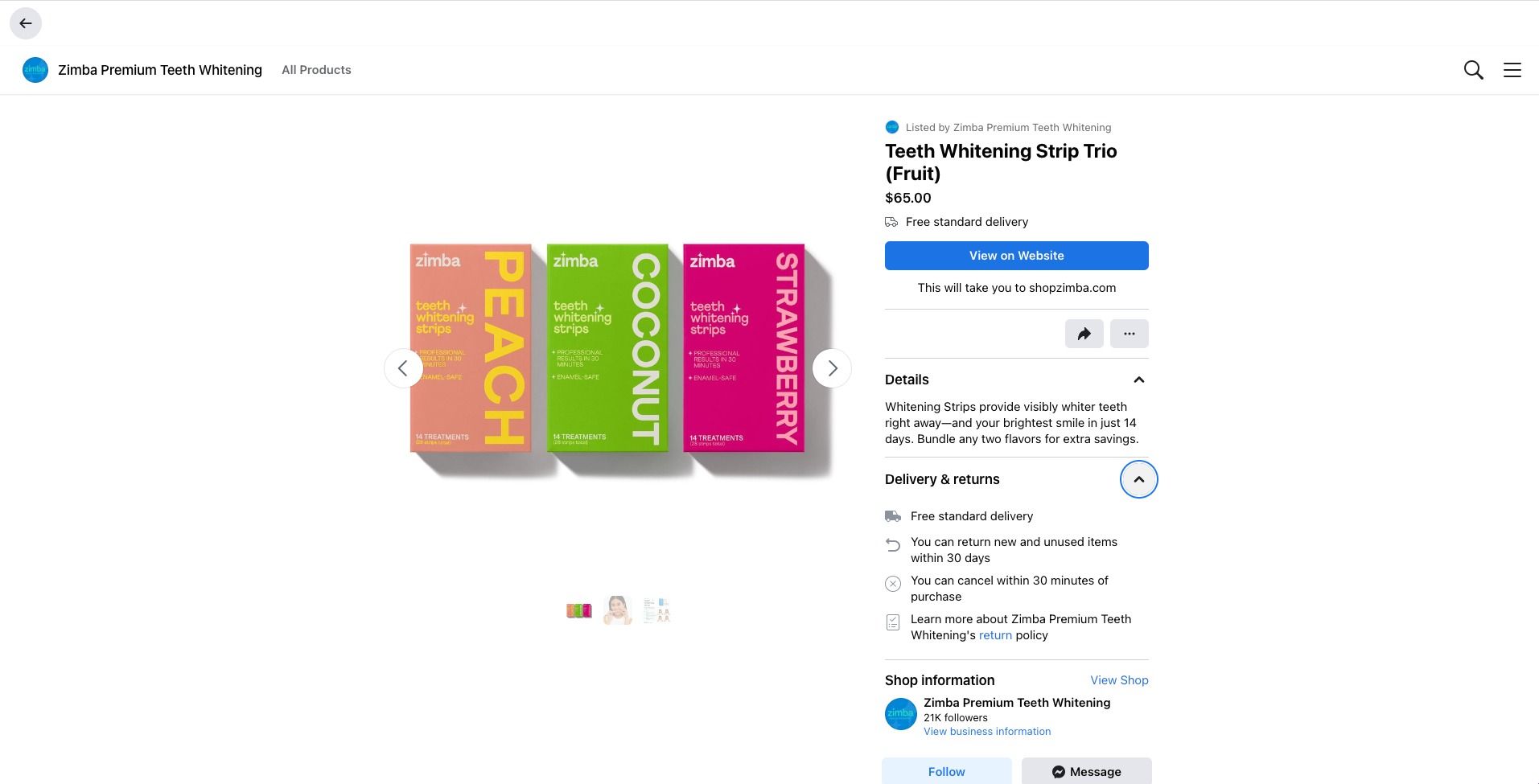
Additionally, customers had the convenience of messaging Zimba for support through Messenger or Instagram DM. Shortly after implementing Facebook Shops, Zimba noticed a significant increase in incremental purchase orders, highlighting the value of this feature.
During the evaluation period of July 1 to August 31, 2020, Zimba assessed the impact of Facebook Shops using data from Commerce Manager and Facebook Ads Manager. The analysis revealed that Zimba received 1,200 additional orders through Shops.
Moreover, customers who made purchases through Shops had an average order value that was 6.7% higher compared to those who bought products directly from the website.
How Pink Tag Boutique Boosts Sales with Facebook Shop
Fashion brand Pink Tag Boutique collaborated with a digital ad agency to optimize its Facebook presence. It set up a Facebook Shop with checkout functionality, allowing customers to make purchases directly on the platform.
It used photo ads and product tagging to enhance product discovery and browsing. Additionally, It introduced Facebook Live Shopping, enabling viewers to buy featured items during and after live broadcasts.
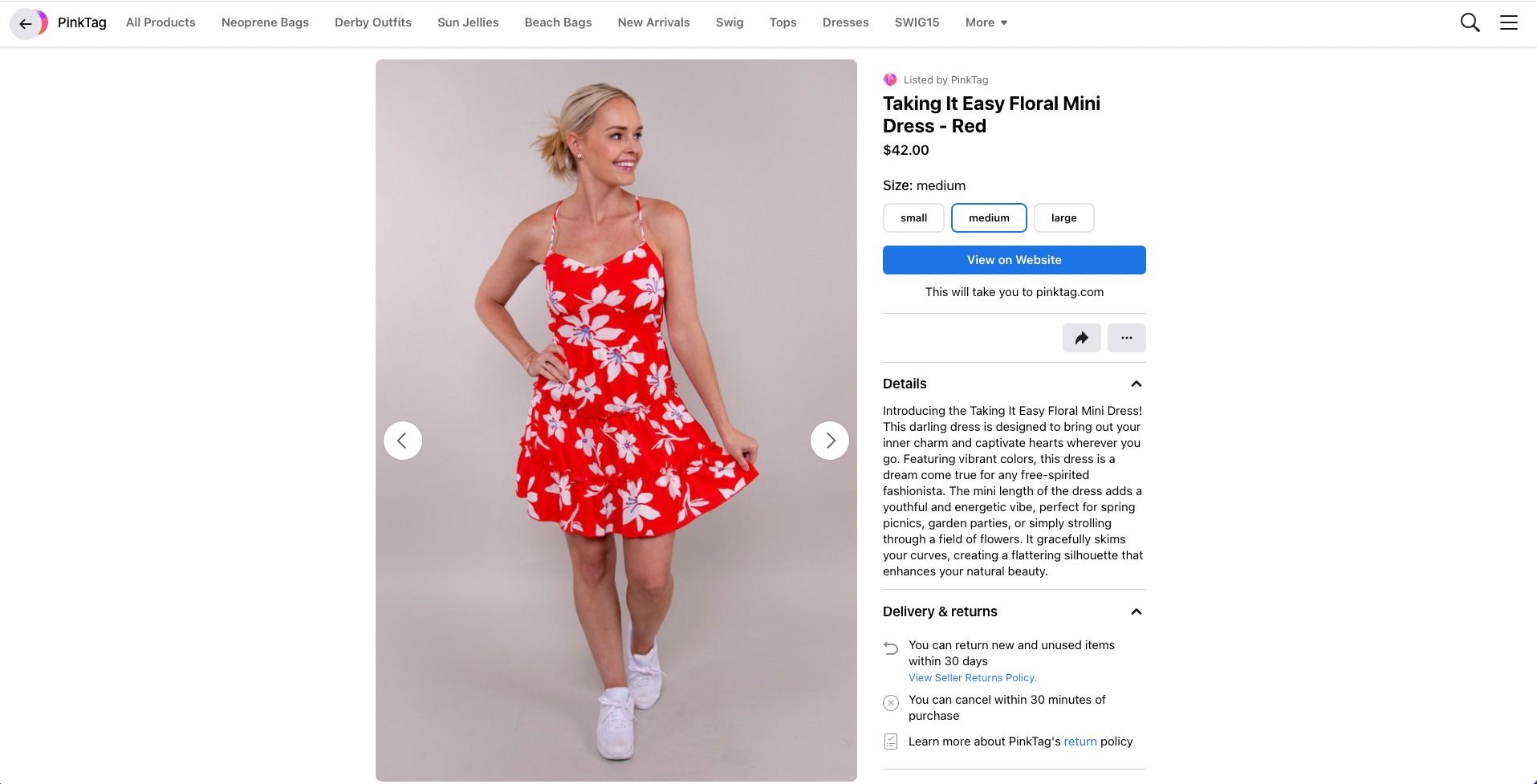
The first live shopping event served as a successful product launch, attracting purchases both during and after the broadcast. Analyzing the results from October 1, 2020, to February 20, 2021, Pink Tag Boutique achieved $44,448 in incremental sales from Facebook Shops.
It received 804 additional orders through the platform, and buyers on Facebook Shops had a significantly higher average order value of $65.79 compared to $39.65 for website purchases. These outcomes highlight the positive impact of implementing Facebook Shops for Pink Tag Boutique's business.
Now that you understand how Facebook Shops operate and how businesses use them to sell, it’s time to learn how to set up your own Facebook Shop.
How to Create a Facebook Shop
To create a Facebook Shop, you’ll need a Meta Business Account (now renamed Meta Business Portfolio), Facebook Page and a Facebook Catalog. If you don't have the last two items yet, don’t worry, as you can create both during your Shop setup.
You’ll also need full control of the Meta Business Account that owns your Facebook Page and Catalogue. So make sure you can Manage permissions for both the Page and Catalogue.
To make your shop visible on Instagram, you'll need an Instagram Business account, which must be connected to your Meta Business Manager or Facebook page. To start with the creation of your Facebook Shop, open Commerce Manager.
1. Click Get Started.
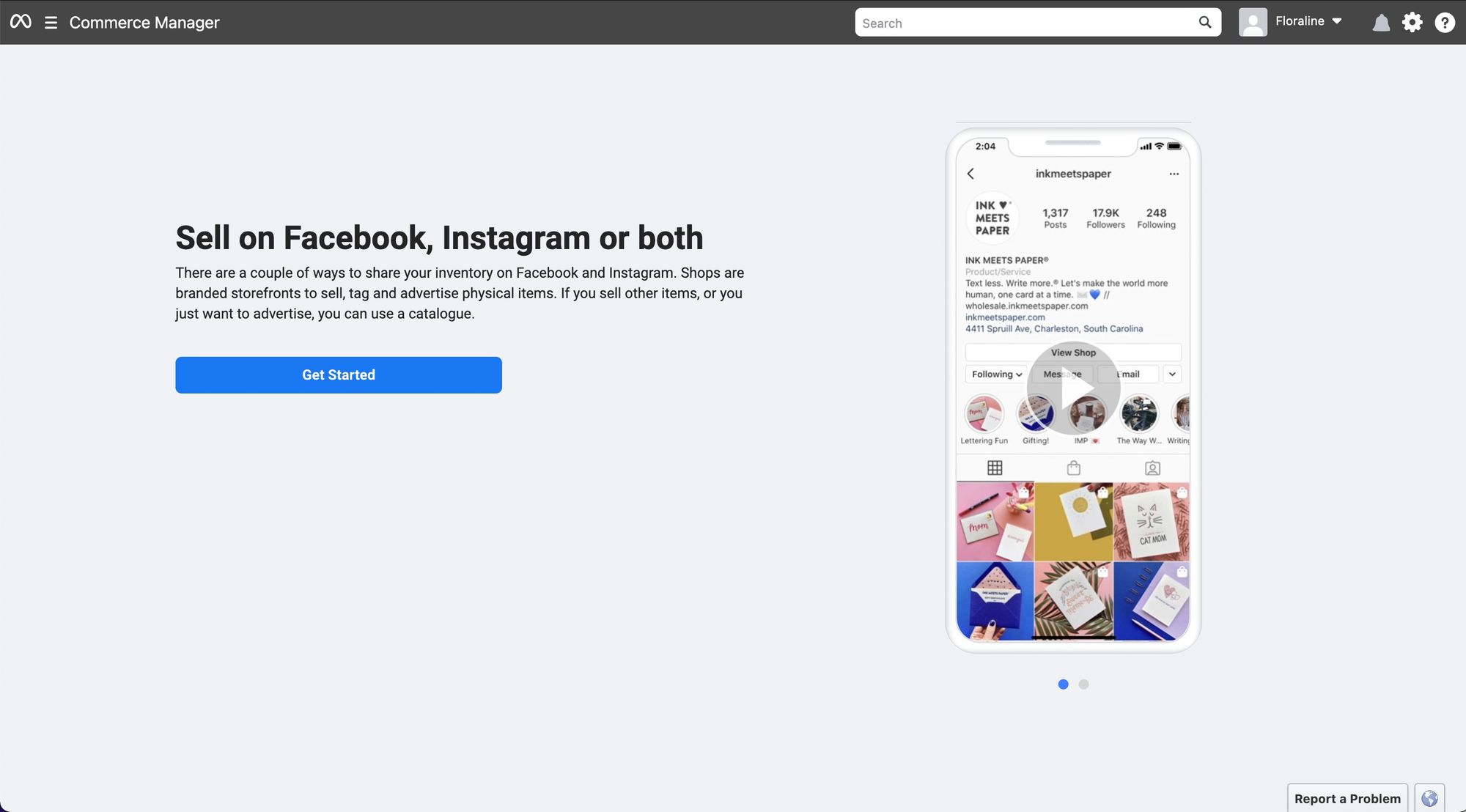
2. Select Create a Shop.
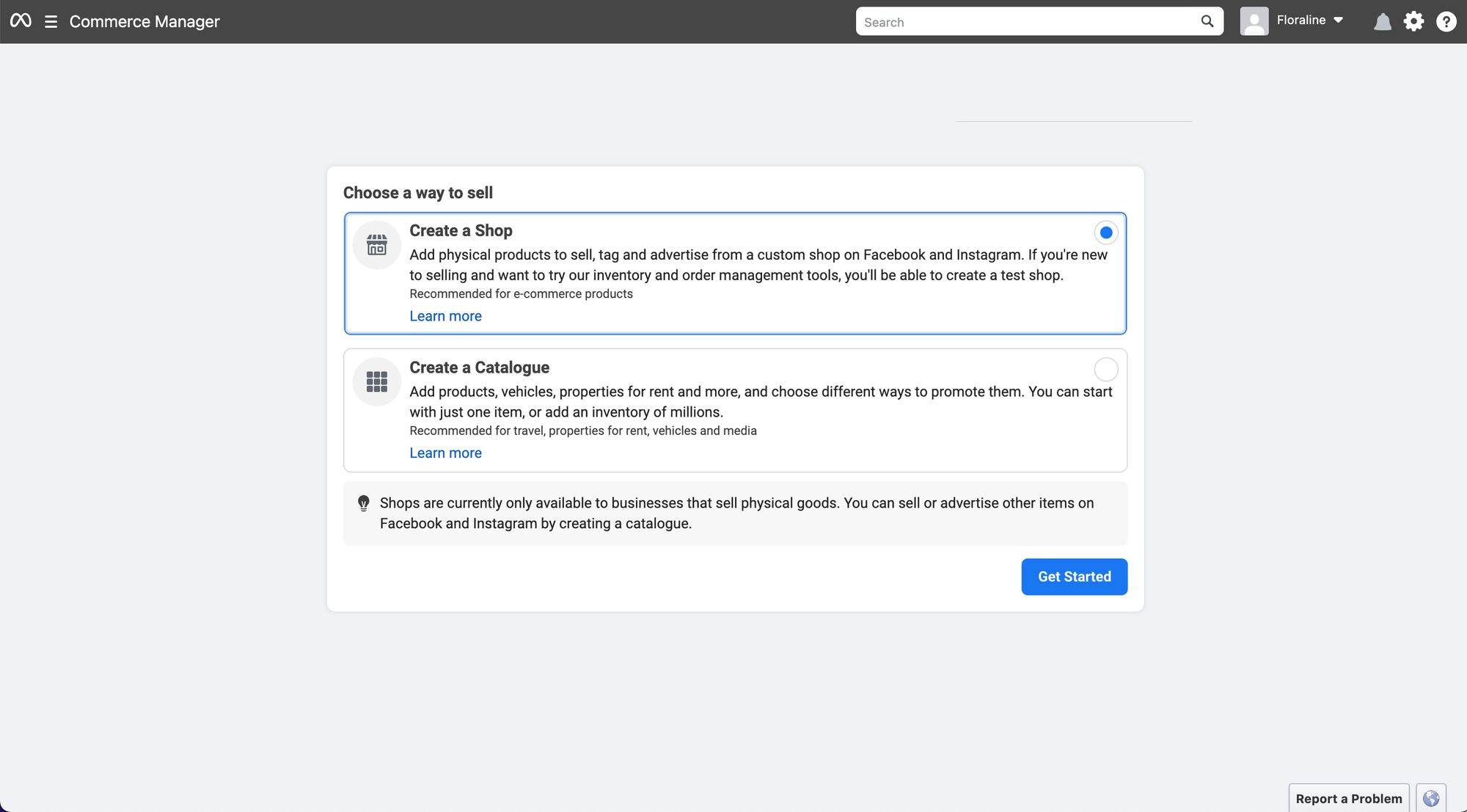
3. Click Next.

4. Choose a checkout method.
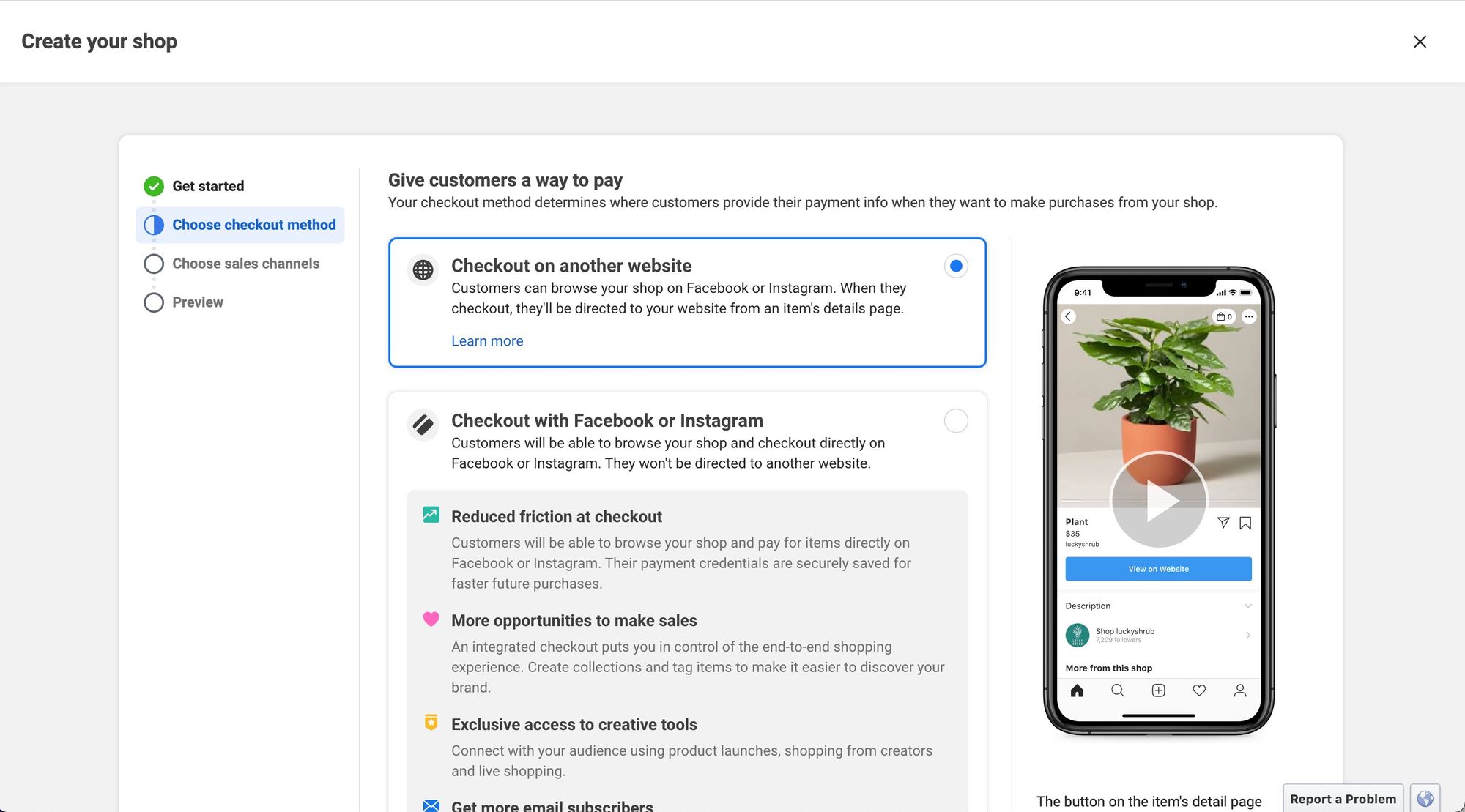
If you are in the US, enabling in-app checkout is an option. Because this is not possible in any other country, we’ll cover how to set up checkout on an external website.
5. Select a Facebook Page or create a new one.

6. Connect a business account or create a new one.
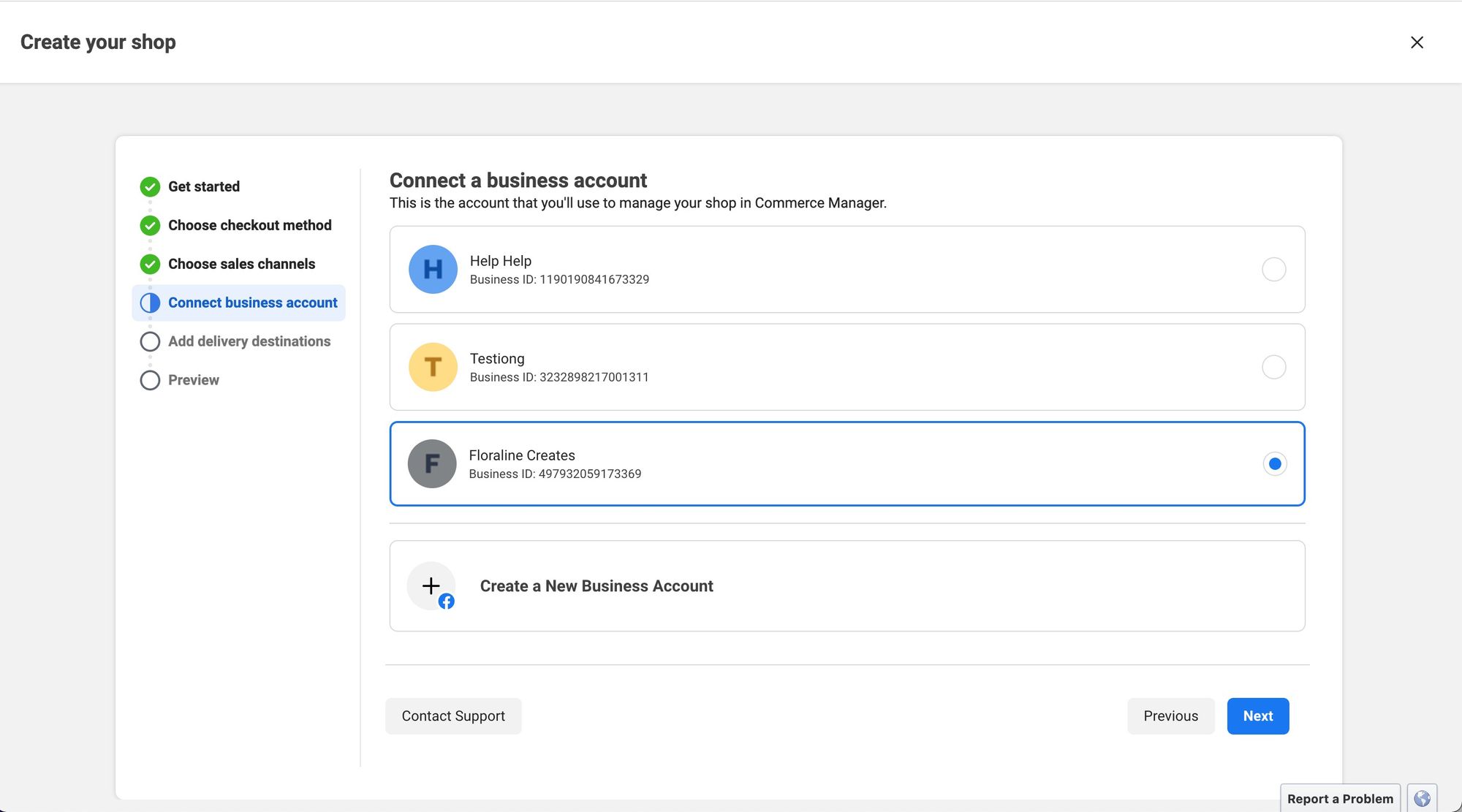
7. Select or create a catalogue.
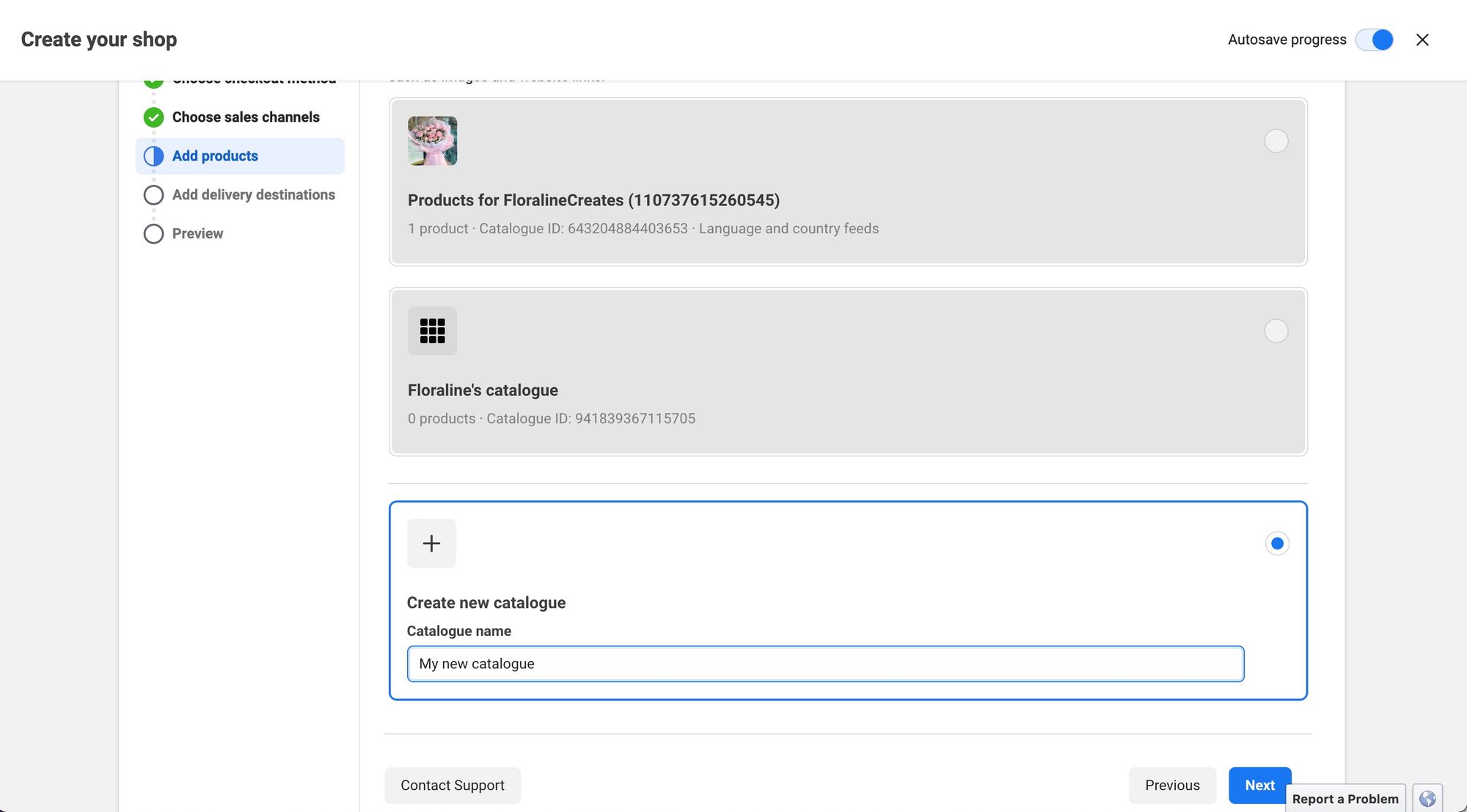
8. Add countries you deliver to.
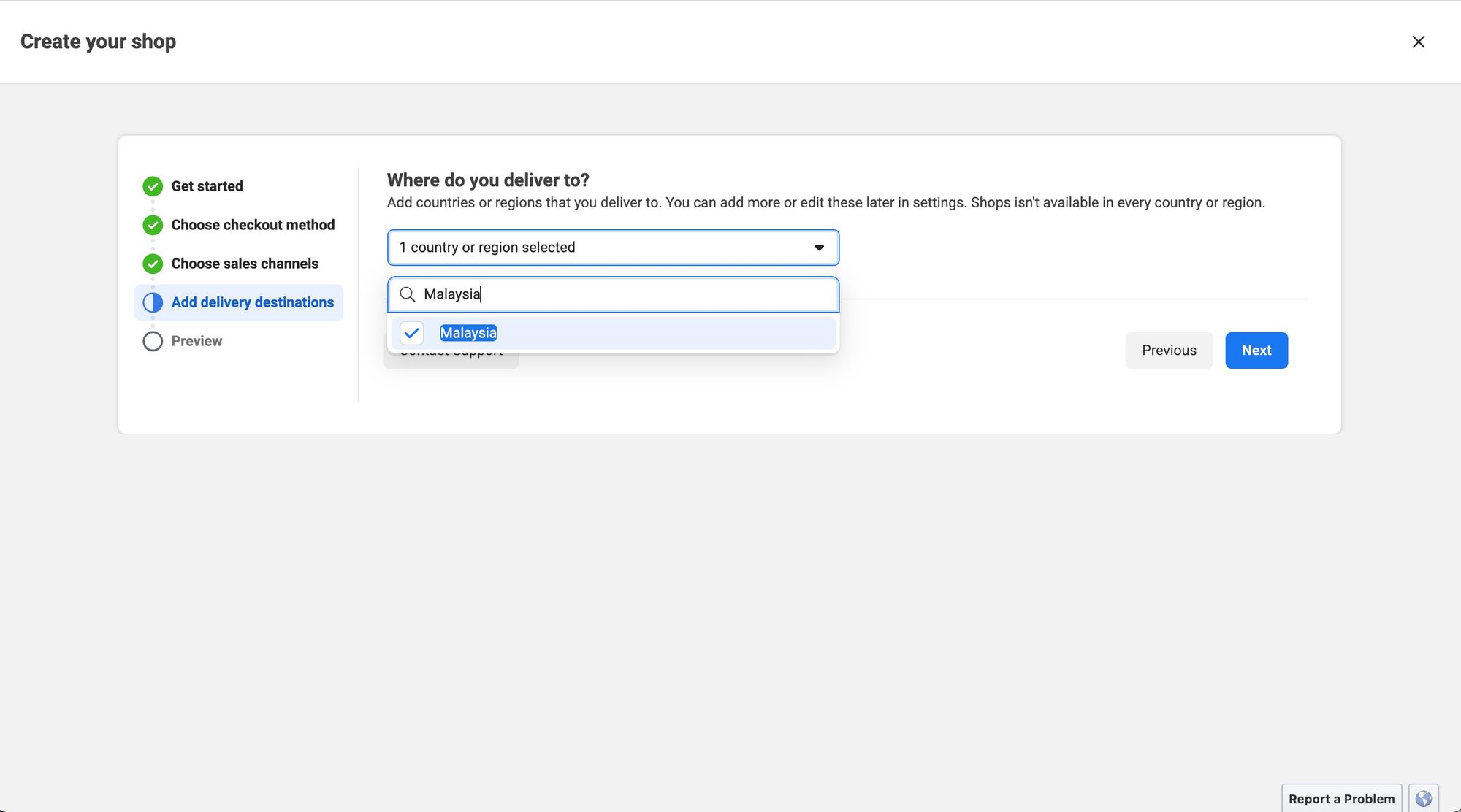
9. Review all the information and click Finish setup.
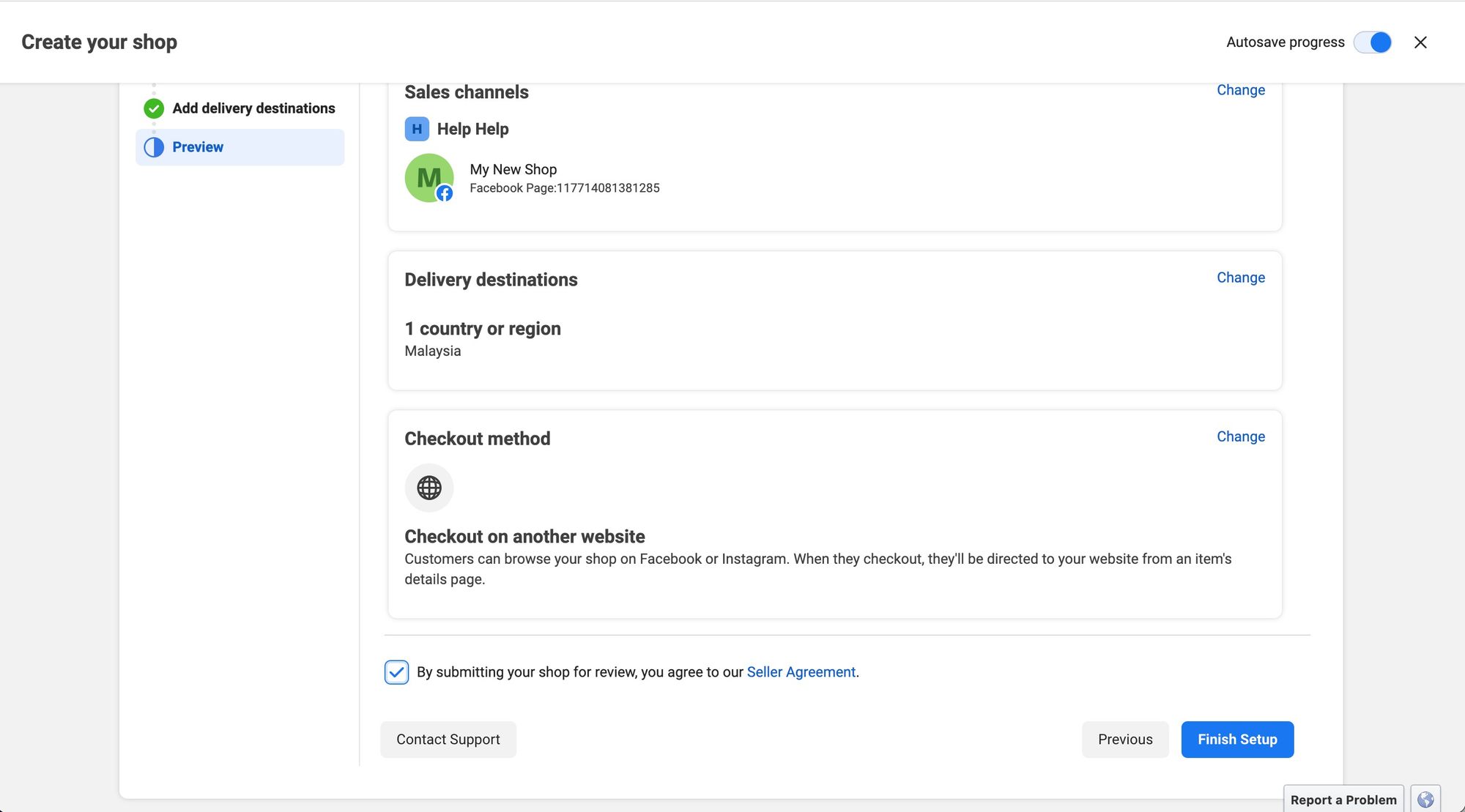
The Facebook Shop approval process can take up to 48 hours. In the meantime, you can manage your catalog items in the Meta Business Manager. Or you could get started with a business messaging platform like respond.io to take customer communication to the next level.
Shop on Facebook with Respond.io
Now that you've listed your products and services on your Facebook Shop, you can anticipate more sales and inquiries from customers.
If you're a large business that needs advanced messaging features to handle high volumes of messages, then you'll need to connect Facebook Messenger to respond.io. Let’s discuss how respond.io benefits businesses with Facebook Shops.
Facebook Shops: Extend the Messaging Window with the Human Agent Tag
Facebook Messenger’s 24-hour messaging window is sometimes limiting.
For example, if a customer contacts your support team on Friday and your business closes on weekends, the messaging window will likely end before the problem is solved.
Other issues are simply more complex and take longer to be identified and solved in only 24 hours.
Respond.io is one of the selected platforms that enable the Human Agent Tag, which extends the messaging window from 24 hours to seven days. You’ll have access to it once you connect Facebook Messenger to respond.io.
Facebook Shops: Connect All Your Messaging Channels to a Single Inbox
Your customers probably message you from other popular messaging channels besides Facebook Messenger. For example, if you also have an Instagram Shop, you’ll receive customer messages through Instagram DM too.
Therefore, you’ll need an omnichannel inbox to consolidate all messaging channels in a single platform for efficiency.
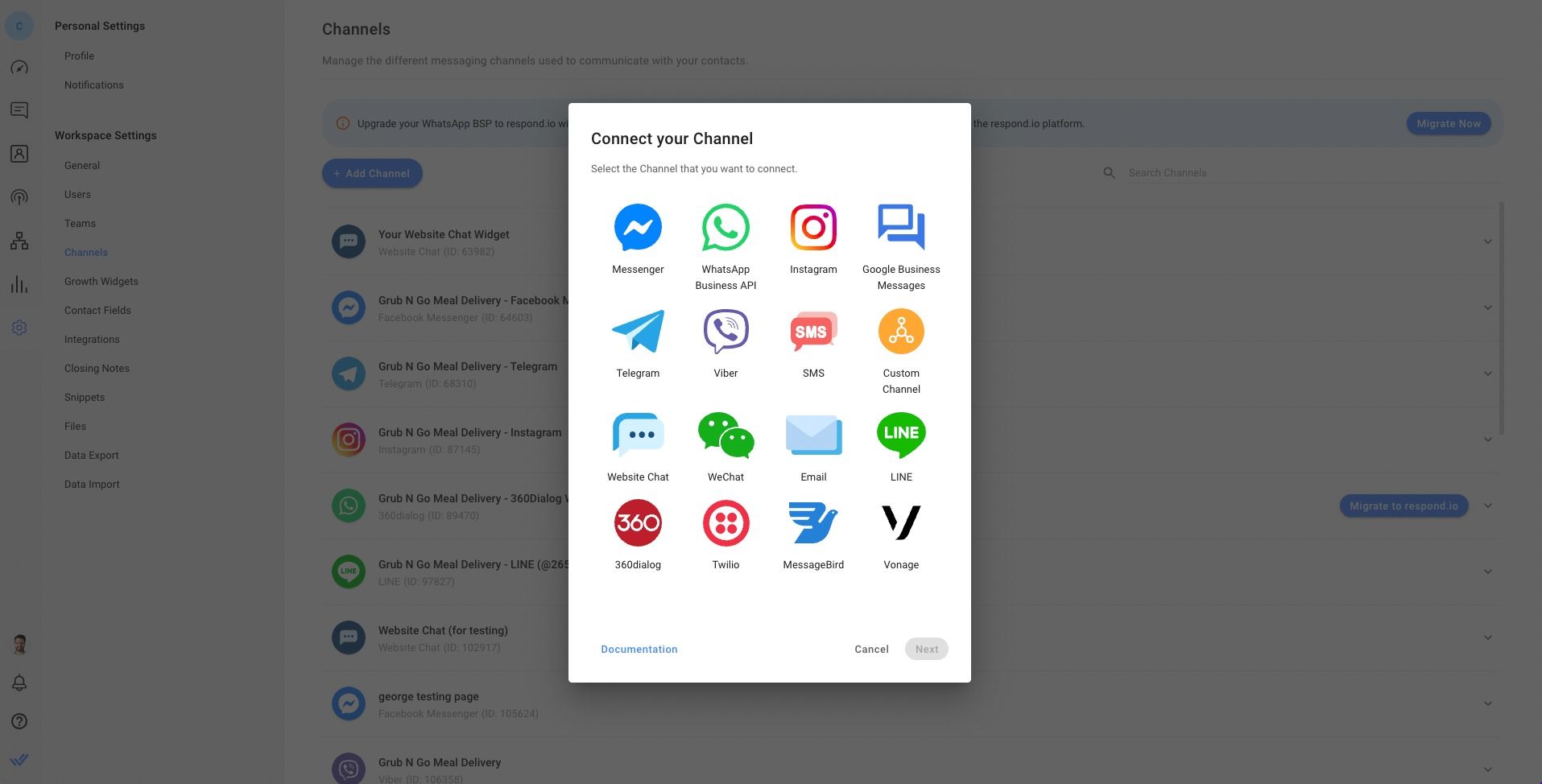
When using several channels for customer communication, it is common to end up with siloed conversations across different channels.
Respond.io’s Contact Merge tool has been purposely designed to tackle this issue. By merging duplicated customer profiles, you’ll be able to create a single customer story and message history.
Facebook Shops: Market Your Facebook Shop with Click to Chat Ads
Using click to chat ads from Facebook or Instagram is a great way to help potential customers discover your shop and get them into a conversation. Respond.io’s click to chat workflow template enables you to automate these ads.

Maximize sales with targeted ads that draw leads in with a click. Capture their contact details, start a conversation and direct them to your shop.
Facebook Shops: Automate Daily Operations with Workflows
To ensure the best shopping experience, it is important to give customers prompt attention when they reach out to you.
While handling low volumes of conversations manually is not a problem, it is hard to guarantee efficient and consistent support when the number of inquiries increases.
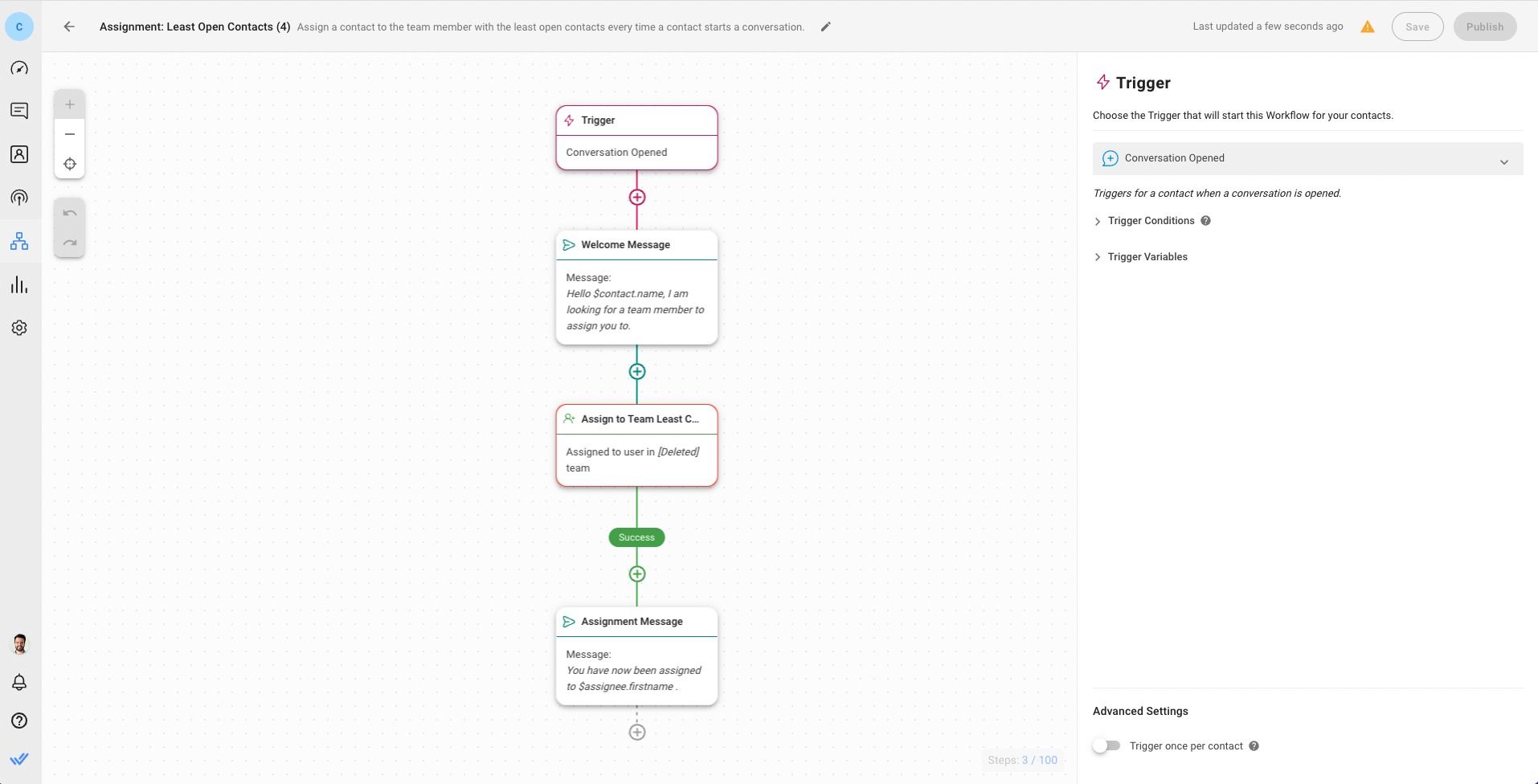
In these cases, an automation builder like respond.io’s Workflows can reduce agent load and systematize all business operations. For example, you can build chat routing Workflows to route customer conversations from your Facebook Shop to specific teams according to your routing logic.
Similarly, build automatic assignment Workflows to pass the Contact to available agents following your automatic assignment logic.
Facebook Shops: Integrate Seamlessly with Other Software
Respond.io allows you to integrate your messaging inbox with various tools such as CRMs, databases, and email marketing platforms for enhanced convenience and efficiency.
The platform is designed to seamlessly integrate with your existing software stack to reduce agent load, keep your customer data updated and provide a great customer experience.
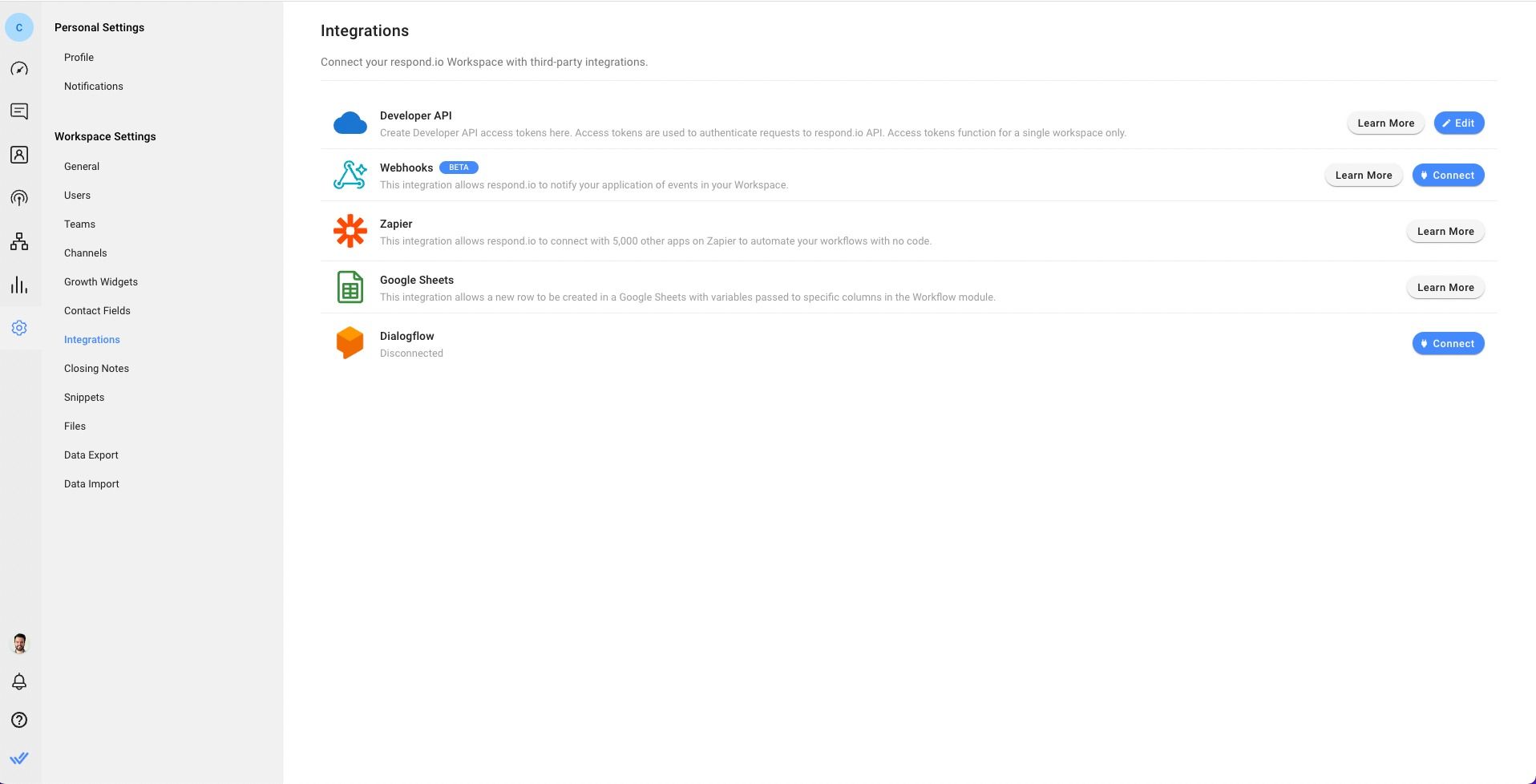
Zapier and Make.com have native integrations with respond.io, meaning you can connect to thousands of apps without coding. If you don’t use the aforementioned services, use respond.io Webhooks to integrate with other apps and automate actions in response to events occurring in respond.io.
Facebook Shops: Keep Track of Key Metrics with the Reports Module
To track the quality of your Facebook Messenger conversations and the performance of your customer-facing agents, respond.io comes with a full-fledged Reports Module. Use it to track key metrics such as response and assignment times.
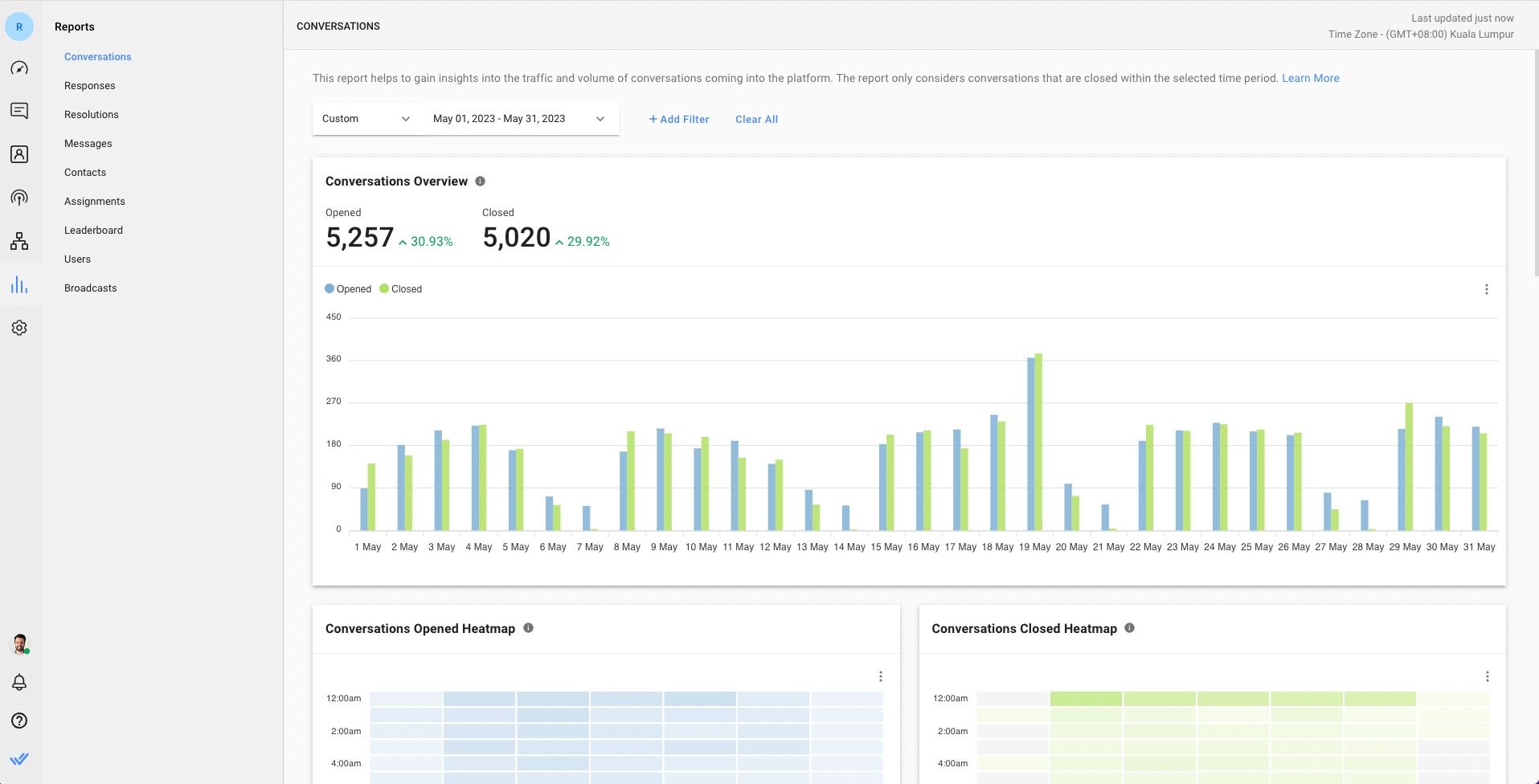
By making use of the different tabs and filters, managers can identify areas for improvement and find insights to keep improving their customer communication.
In conclusion, Facebook Shop offers an incredible platform for businesses to showcase their products and connect with customers. By using Facebook Shop for sales management services, you can anticipate more sales and inquiries from customers.
If you are looking for the best customer conversation management software, try respond.io for free.
Turn customer conversations into business growth with respond.io. ✨
Manage calls, chats and emails in one place!
Further Reading
Did you find this article useful? Here are some articles that may interest you:


























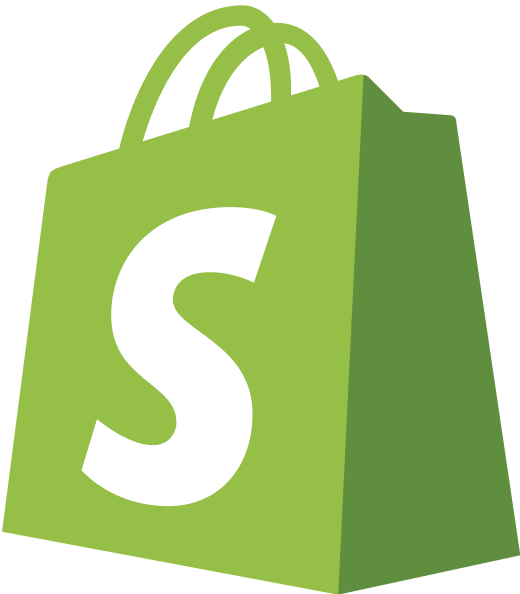











 Electronics
Electronics Fashion & Apparel
Fashion & Apparel Furniture
Furniture Jewelry and Watches
Jewelry and Watches
 Afterschool Activities
Afterschool Activities Sport & Fitness
Sport & Fitness
 Beauty Center
Beauty Center Dental Clinic
Dental Clinic Medical Clinic
Medical Clinic
 Home Cleaning & Maid Services
Home Cleaning & Maid Services Photography & Videography
Photography & Videography
 Car Dealership
Car Dealership
 Travel Agency & Tour Operator
Travel Agency & Tour Operator




